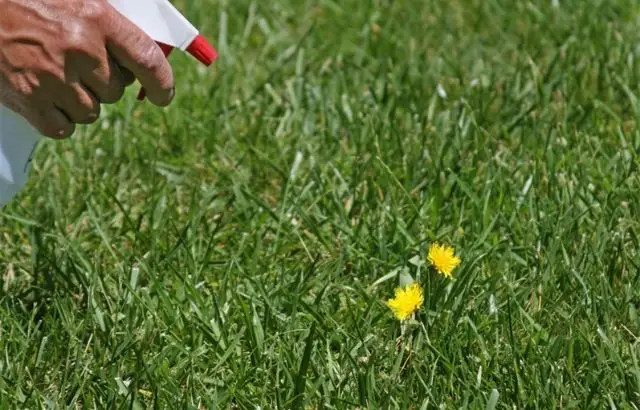Spanish moss stands as a plant that grows on trees’ branches, hanging in tufts like a grey or greenish nest. It is common in hot and humid areas, for example, near rivers and swamps. While some owners think it has a southern or allure charm, others consider it an eyesore and want to get rid of it. If you want to transplant Spanish moss to your trees, the trees must be close to moisture. Too far from the river or swamp and the Spanish moss will wither. But if your goal is to remove Spanish moss, chemicals can damage your tree. To this end, the steps on how to remove Spanish moss from the tree have been highlighted in the latter parts of this post.
Furthermore, Spanish ball moss belongs to the category of so-called “epiphytic” plants, which means that they can develop on other plants without harmful parasites. They are mainly found on fruit trees, on fairly old trees, or withering away.
Their presence does not harm the trees on which they grow since they do not enter the tree. Of course, Spanish moss can harbor fungi or insect larvae, but they do not present a danger to their “host”. On the other hand, Spanish mosses are of little known interest. They are, in fact, susceptible elements, in particular to copper and sulfur dioxide. If the healthy trees are covered with it, it proves that the atmosphere is healthy, free from pollution.
How to Remove Spanish Moss from Tree: The tools needed.
For Spanish moss removal from the tree, some tools would be needed. This includes:
- Spray
- Spray pump
- Brush with stiff plastic bristles
- Rice straw brush
- Telescopic pole
- Ground stakes
- Gardening gloves
How to Remove Spanish Moss from Tree
Using Copper
The most effective way of removing moss from trees involves using fungicidal products, mainly copper-based sprays. The Bordeaux mixture is one of the most widely used in the agricultural field. This includes fungicides made from copper sulfate, calcium hydroxide, and potassium. This valuable potassium source (potassium) can contain as much as 10 percent potassium and 1 to 2 percent phosphorus. This is also quite effective in the fight against Spanish moss already established and in preventing new settlements.
The Bordeaux mixture must be diluted in water at the doses indicated on the label of the product purchased and administered on the plant’s wood, wetting the whole trunk and branches well. It is better to do this in autumn-winter, during vegetative rest, when the plant is bare.
Brushing method
To remove Spanish moss from the tree through brushing, it is essential to note that trees with bark that tend to peel, such as birch, should not be brushed. Because, yes, removing Spanish moss manually involves brushing! The operation is carried out on a dry day, outside the frost period. In any case, the trunks must be perfectly dry.
Steps
- Put on a pair of gardening gloves and remove all Spanish moss in the tree with your gloved hands. Get as much moss off as you can get. Be careful not to damage the tree buds.
- Brush moss and algae growing on the tree trunk and large branches with a soft bristle brush broom.
- Use a pressure washer to remove stuck-on Spanish moss that you couldn’t remove with your hand or broom. Only use a pressure washer in the winter when the power from the water does not harm sprouts.
- Remove dead or decaying tree branches and bark. Decaying organic matter is a food source for some species of moss and fungi.
- Trim the surrounding tree branches with a pair of sharp garden shears to provide adequate sunlight. Most moss species grow in low light conditions. Allowing extra light to flood the tree will reduce the possibility of future moss growth.
- Check the tree every week for signs of moss. If the moss starts to grow again, remove it as soon as possible. It is easier to remove the moss early before it takes over a large portion of your tree.
Do you know;
In practice, you should also use a brush with stiff plastic bristles or a rice straw brush. It is better to leave aside the accessories with metallic bristles that are too aggressive. It is necessary for the actual cleaning to tackle the trunk and the branches and proceed from the top to the bottom (after impregnating the brush with water). Brushing should be gentle so that the tree is not “injured.”
Finally, it would be best if you took the opportunity to control the health of the tree. Depending on the findings, you can prune the branches, repairing any wounds by applying healing mastic to protect the tree. It is essential not to use pesticides or fungicides that are very harmful to plants.
Using a Telescopic Pole or Stakes
- To remove Spanish moss from the tree using a telescopic pole or stakes, do make use of the following instructions:
- Avoid using a ladder when physically removing Spanish moss and purchasing a long telescopic pole or combining several 5-foot ground stakes tied together with duct tape. Telescopic poles can be ordered at home improvement stores, while your local garden store will sell plant stakes.
- Overlap the garden stakes for each foot and tape the overlapping portion of the stakes tightly. The length of the post that you will need to buy or make depends on how high you must remove the Spanish moss.
- Attach a hook to your pole with tape. It should face the curve so that the Spanish moss can be lifted off the branches. Some posts you can purchase include hooks.
- Remove the Spanish moss with the end of the hook, careful not to touch any power lines or bird nests.
- Consider hiring someone who uses Spanish moss for looming or other gear. You may also find people who want Spanish moss and are even willing to remove it themselves.
Using Bleach and water
For Spanish moss control from the tree using Bleach and water, the important thing is to identify the area or surface of moss to eliminate and protect the rest of the areas. You can also protect the rest of the garden and species that you do not want to damage.
Next, cover those areas with plastic or cloth so that there are no possible splashes that could harm your crops, plants, or grass. Once everything is well protected, it is time to prepare the solutions to apply to the Spanish moss to be removed.
Using Bleach and water in equal proportions form a lethal mixture for the invaders. Your application needs to find a spraying system such as a spray or a spray pump.
Before applying the mixture, you can test with a root brush if there is loose moss on the surface that can be removed manually.
Now;
Next, remove that loose debris and continue with the application. Then let the mixture stand for at least 10 minutes until the moss loosens. With this, you can easily remove all the remains, thanks to a hose’s pressure, for example.
Other mixtures like vinegar with laundry soap and baking soda also help kill Spanish moss, though they take longer to work. Someone who used this once testified that over the next year, he watched as 80%-90% of the moss died off. Its application is the same as in the rest of the cases, with a sprayer. Furthermore, in stores, you will find special anti-moss and anti-lichen products that work perfectly.
These special products are ideal when the moss and lichen are found on the tree, in the garden or lawn, and in places close to other vegetation that we do not want to damage. They are responsible for killing the moss without harming the rest of the garden. You can also harness the bleach and soap for other surfaces such as the roof, walls, or artificial coating floors. If you cannot remove these items using a homemade moss killer for trees, consult a professional extension agent who can provide further information and advice.
How to Remove Spanish moss from Tree: FAQ Section
Should you remove Spanish moss from trees?
Firstly, it should be noted that it is unnecessary to eliminate the Spanish moss that lines the trees. However, if they are too invasive on trees, it is quite possible to remove them.
Is Spanish moss harmful to trees?
As earlier highlighted, Spanish moss is not harmful to trees as it does not feed directly from the tree. However, if it tends to affect the tree’s growth, it must be removed.
What can you spray on Spanish moss to kill it?
You can spray fungicidal products, mainly based on copper, as well as Bleach and water.
Conclusion
In conclusion, the Spanish moss is an epiphyte plant from the bromeliad familythat does not have roots but is held together by forming filamentous structures. It generally appears when there is excess humidity in your garden’s soil, but it can also occur when there is poor ventilation, one of the most common causes of Spanish moss on trees.
If you have also observed the appearance and formation of Spanish moss on your trees, the steps highlighted above on how to remove them would be indispensable for you.
Read More: How Far Apart To Plant Citrus Trees




